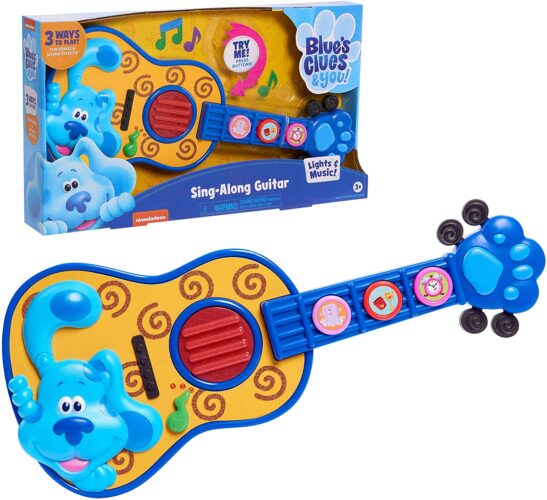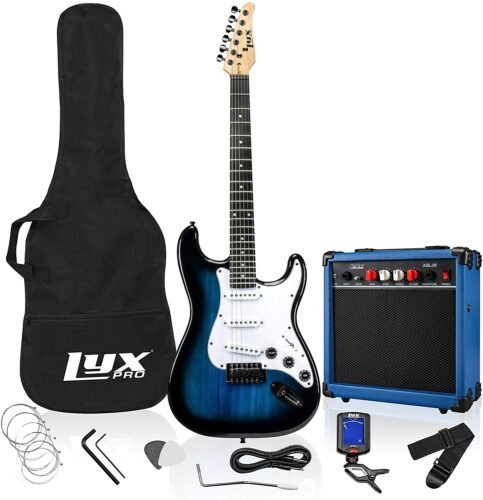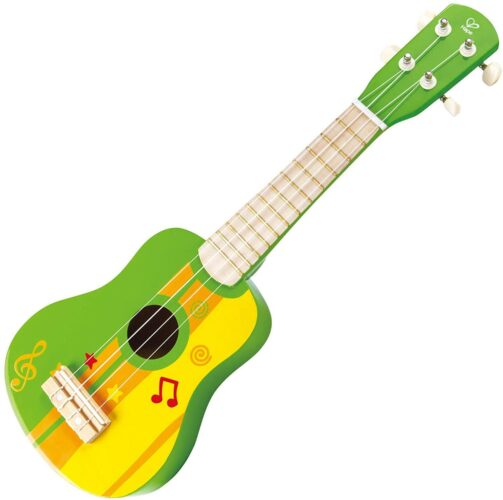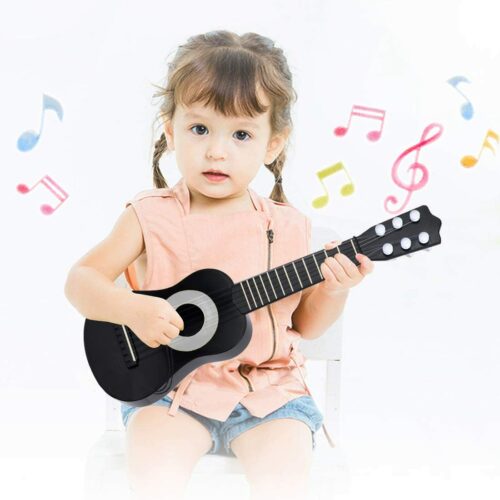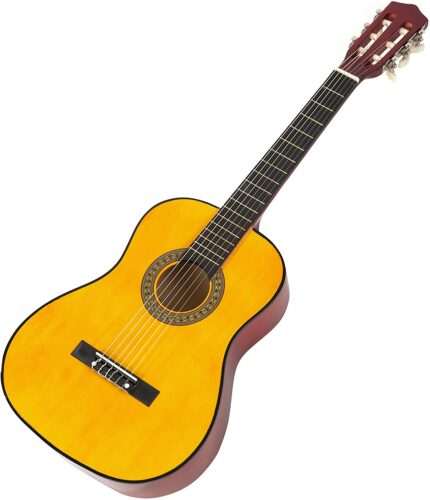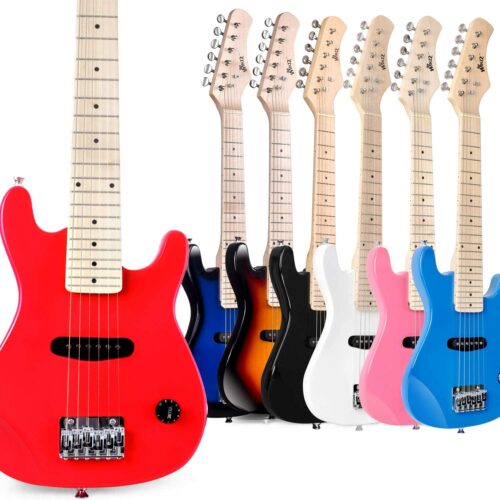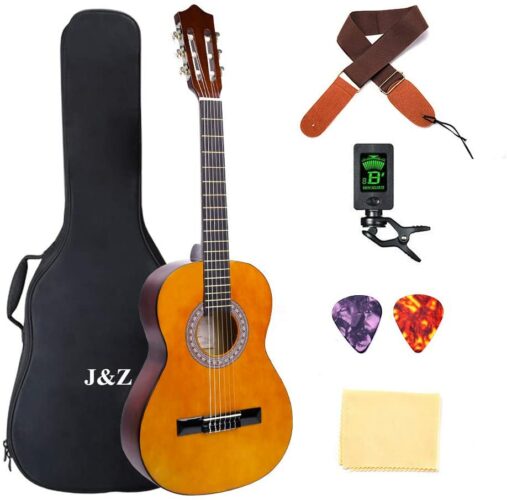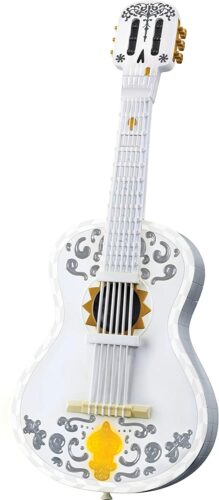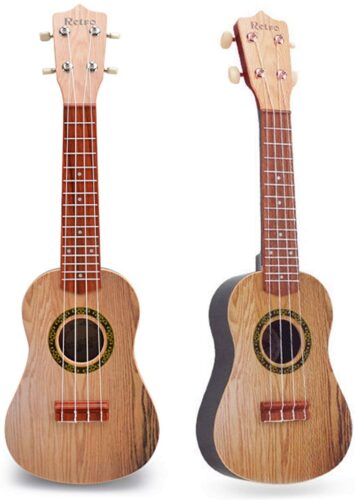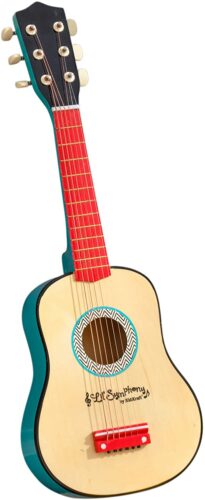A guitar is one of the most widely popular musical instruments that people want to learn. It has an intrinsic cool factor that draws crowds. A jam session is incomplete without some musical chords being played on a guitar. If you want to get your kids started early in learning and mastering this instrument, the gift of a guitar would be an excellent idea. Guitars for kids are slightly different than regular ones. Read on to learn more about the different kinds of guitars available for kids and our shortlist of the best ones you can buy online.
Different Types of Guitars Available for Kids
Guitars for adults can be easily classified into nine major categories like acoustic, classical, electric, bass, etc. But, when it comes to kids’ guitars, you’ll be looking at a very different set of features. Kids’ guitars are shorter in length, lighter in weight, have softer nylon strings, and other features that make them age-appropriate. For example, toddlers wouldn’t know the difference between chords A and C, and they just want to believe that they’re playing the music while it’s actually a pre-recorded guitar with fake strings to strum along.
We’ve tried to broadly categorize the different types of guitars for kids available online based on age range, design and make, and various other features offered. If you’re looking to buy a guitar for your kids, it will most likely fall into one of the types listed below:
Pretend Play Guitars (18 Months to 4 Years)
These are guitar-shaped toys that come with a couple of pre-recorded songs and tunes. Usually based on popular shows, they have eye-catching designs and graphics on the body, are made of high-grade plastic that’s lightweight, and vary in size from 16 to 20 inches. Some pretend play guitars also have fixed chords that can be played by pressing a button. Although they don’t have pre-recorded sounds, you can only play certain chord progressions and tunes on these fixed tune guitars. You’ll need standard batteries or a recharge cycle to turn these on and play with them.
Lightweight Plastic Guitars (3 to 5 Years)
These toy guitars are also similar in size to pretend-play guitars. They come in bright colors, have sturdy bodies, and are designed to mimic the real thing rather than to deliver top-notch musical notes. They usually have nylon strings with plastic tuning keys. Kids can actually strum the strings to make music. They have a very mild sound, need frequent tuning, and make good gifts for kids who aren’t serious about learning music but like to hold a guitar and play along when the adults are jamming.
Wooden Guitars for Kids (3 to 13 Years)
These mini guitars are shorter than regular-sized guitars. They vary in size based on age recommendations. The lower ranges—21 to 30 inches—are aimed at kids in the 3 to 7 years age bracket, while the longer ones—30 to 36 inches—are aimed at kids in the 8 to 18 age bracket. Above 36 inches are usually regular guitars for adults. They have wooden bodies, either 4 or 6 nylon strings, metallic tunic keys, and decent sound quality. Based on the design of the body and the notes output, these can also be classified as acoustic or classical guitars. Kids who’re learning to play music or master the guitar can use these as beginner guitars.
Electric Guitars for Kids (3 to 13 Years)
Like acoustic guitars, they also vary in length, and different sizes cater to kids in various age brackets. Their output varies with their amplifier voltage capacity—6V, 9V, etc. These are much heavier than the wooden guitars. Nylon strings, polished and glossy enamel, cable cords, and a guitar strap are some standard features of electric guitar kits for kids. Their sound output is comparable to electric guitars for adults if the quality of the guitar is good. Kids who struggle with acoustic guitars and want an easier route to learning how to play the guitar can go for this option.
Some acoustic and electric guitars for kids can be just as good as professional playing equipment but come at a premium price. That’s nothing to worry about, though, as the economic options also have stellar notes. They might not produce the kind of output you hear in concerts and orchestras, but they’re excellent for learning and making music, mastering the guitar, playing in junior bands and smaller venues, and just jamming. You can use some fairly common and basic guitar hacks like changing out the strings for a better set, oiling the tuners, etc., to improve the performance of your kids’ guitars.
Below we’ve compiled a list of the ten best guitars for kids that you can purchase online. It has an option or two for all kinds of guitars discussed above.


